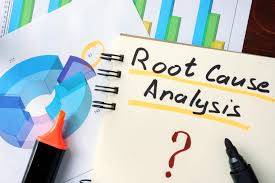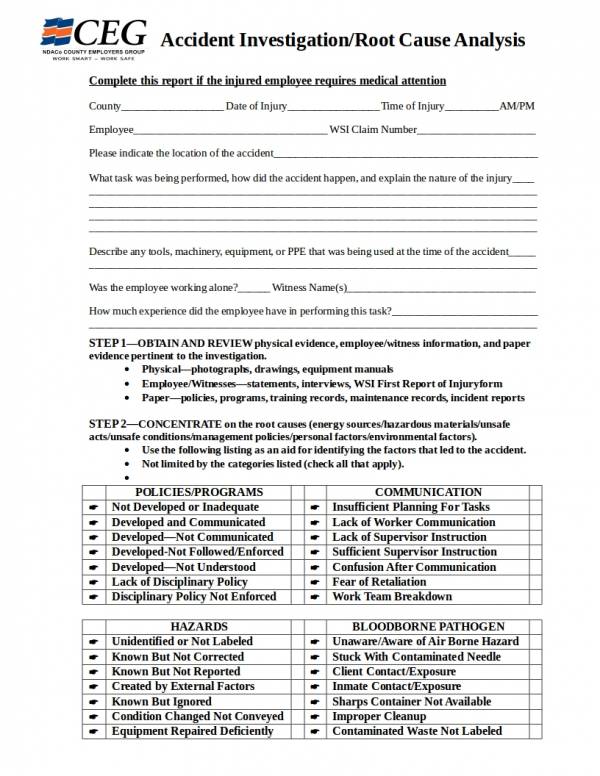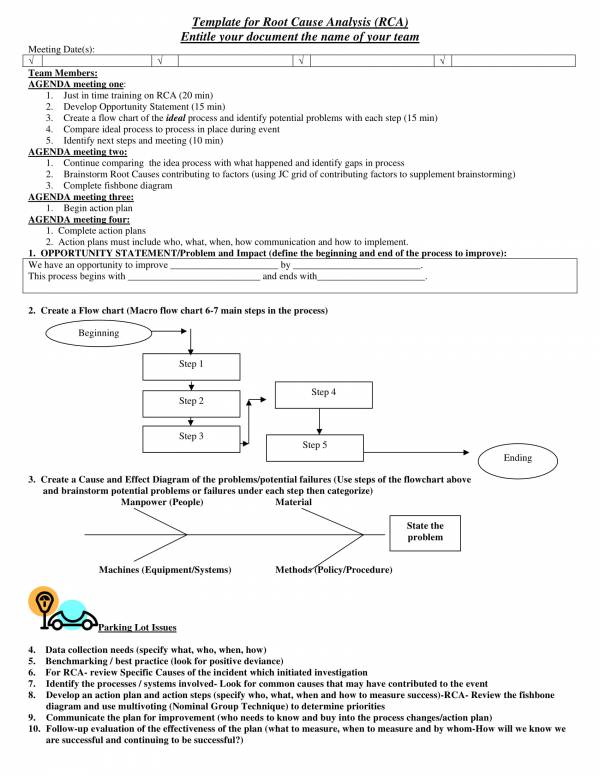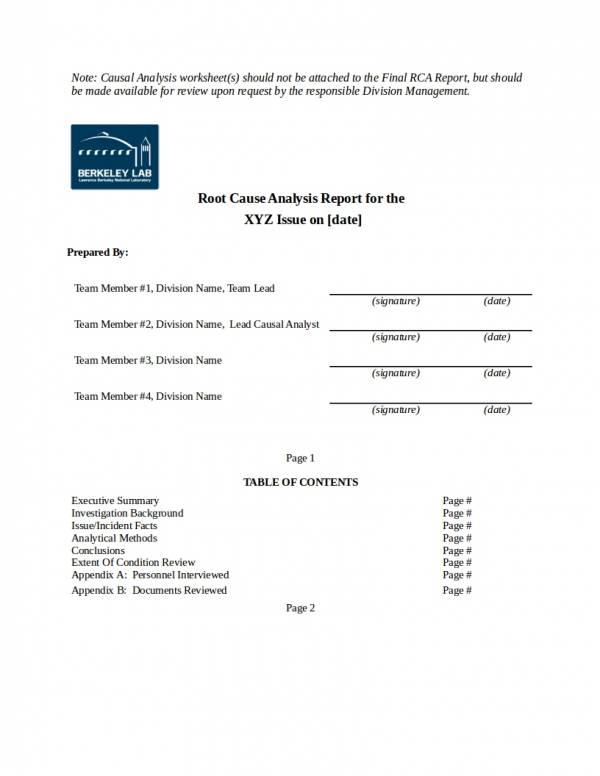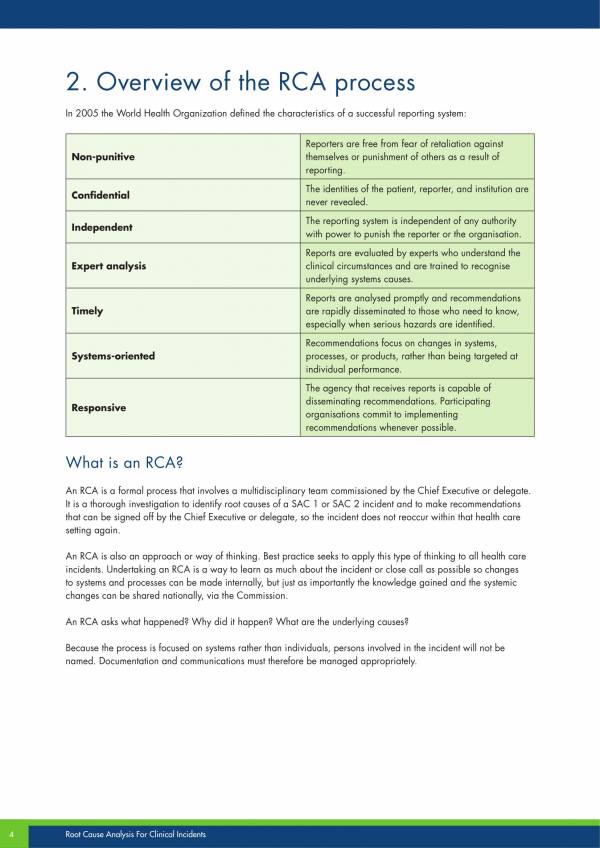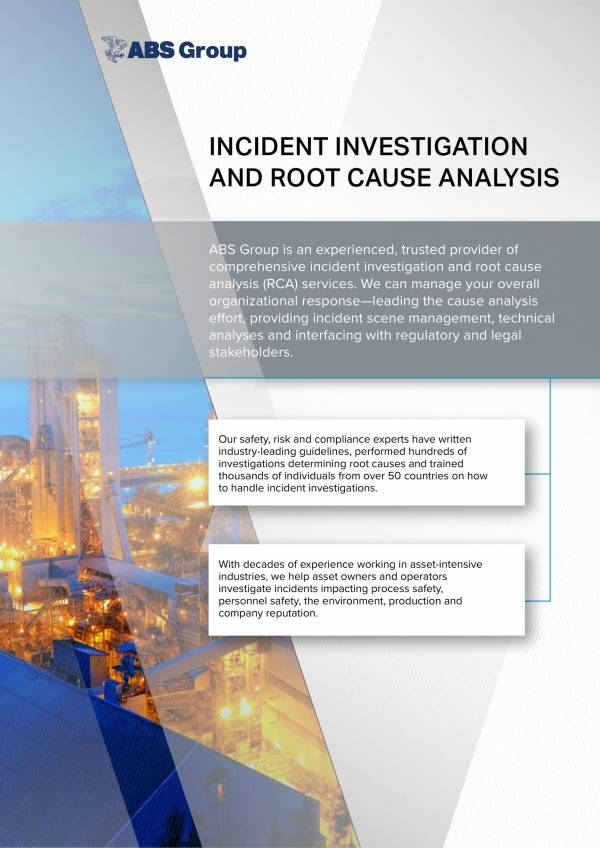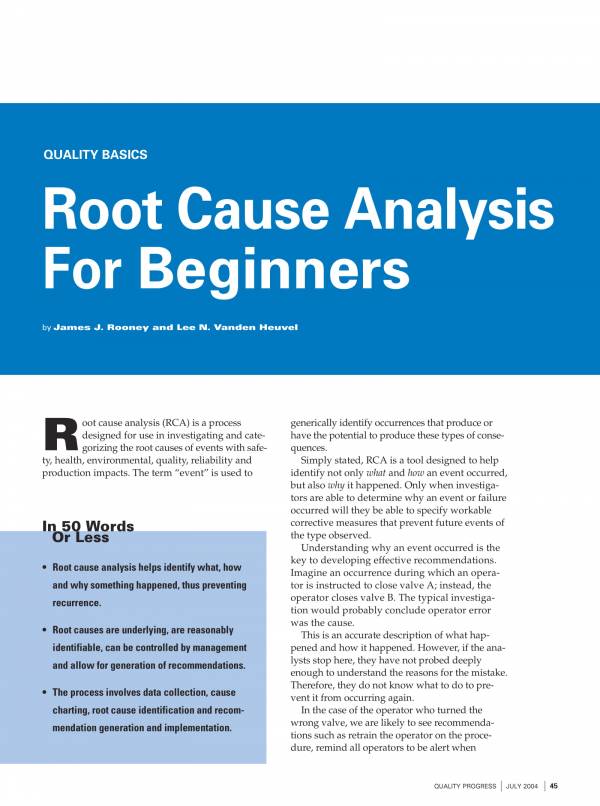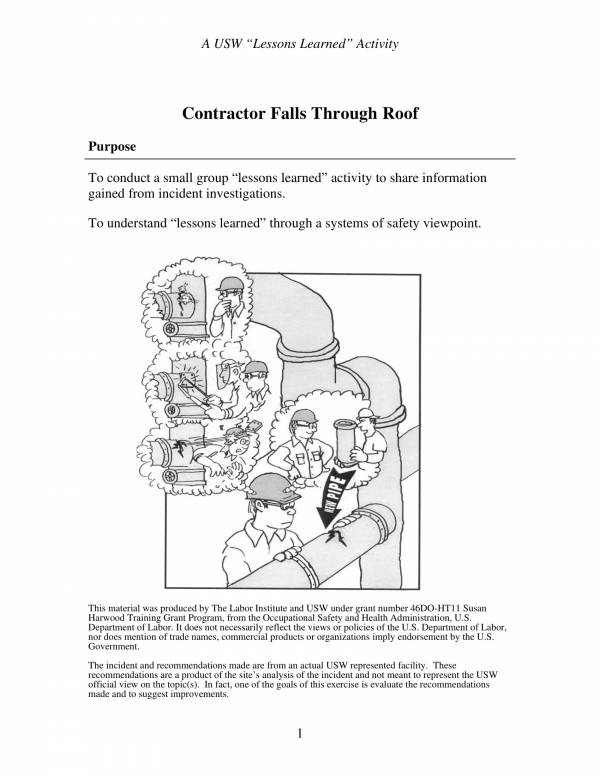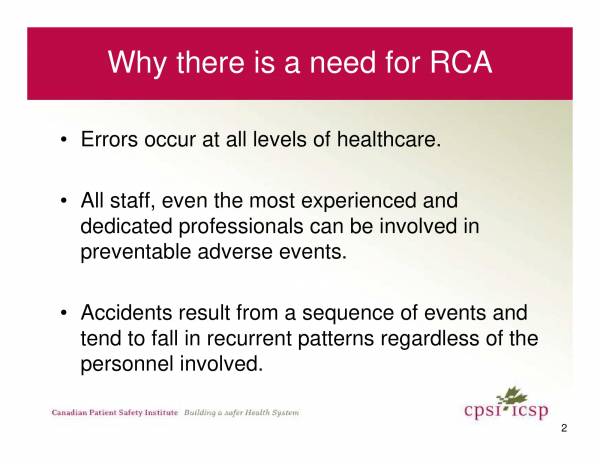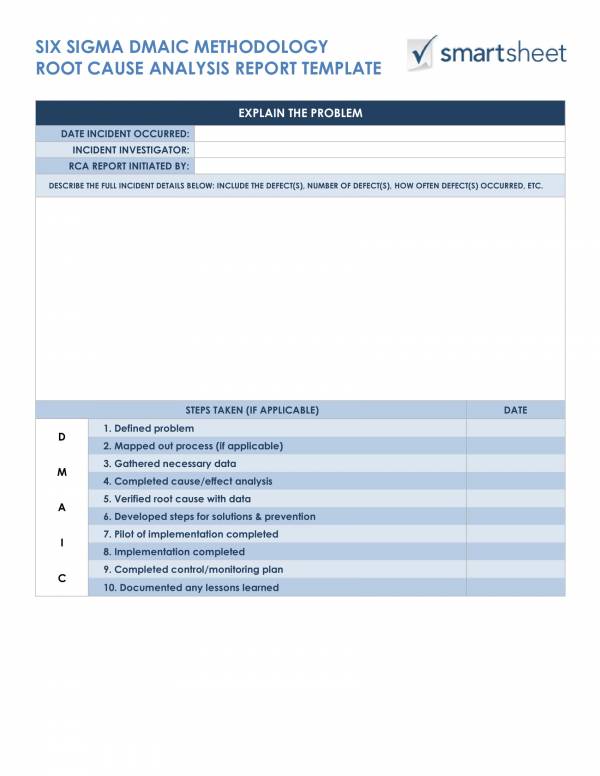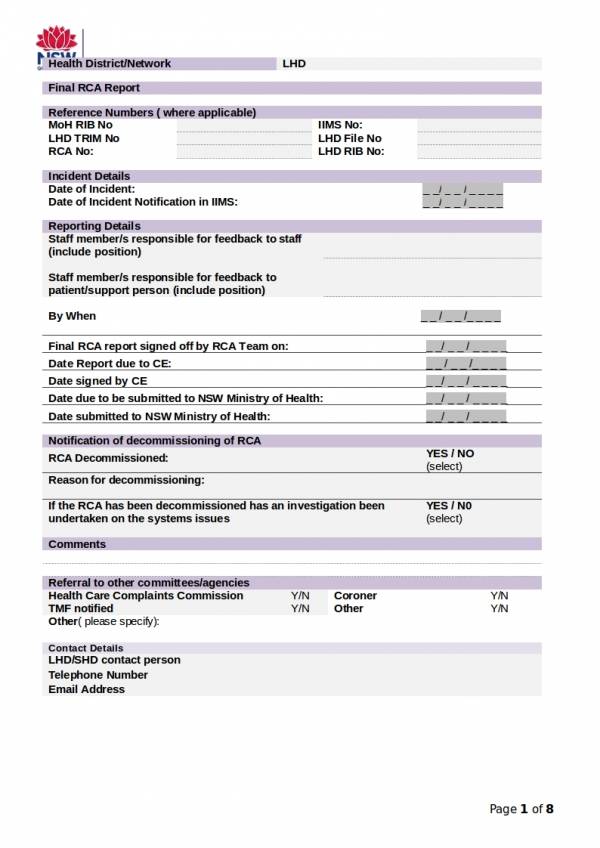When you want to examine something to know more about it and be able to explain and make discussions related to that something, then you need to make an analysis. There are different and specific types of analysis used on a number of things and in different fields of work. But if you want to find out the cause of an incident, then the analysis that you need is an incident root cause analysis.
In this article, we will be defining what a root cause analysis is, what are its uses and other basic information that you will find useful We have also included downloadable templates that may come handy as your reference. You may check them out below.
Incident Root Cause Analysis Template
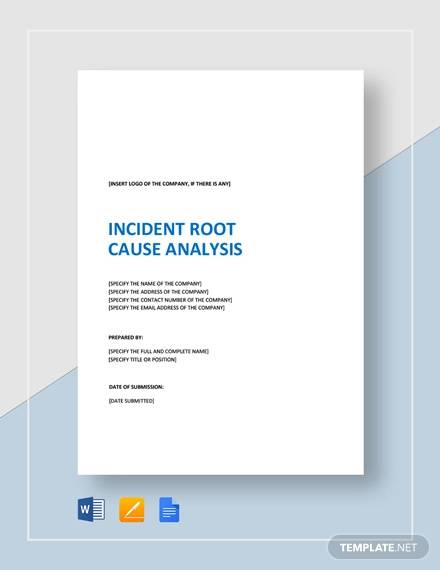
Root Cause Analysis Template
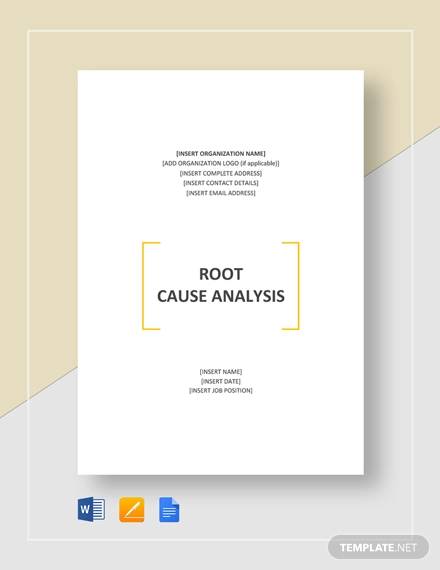
Sample Incident Analysis
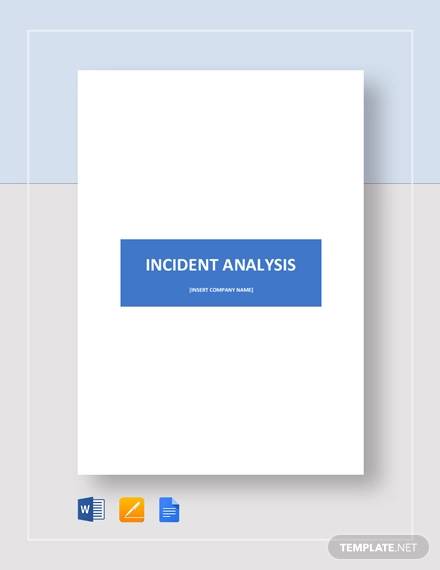
Accident Investigation Root Cause Analysis Form
Template for Root Cause Analysis
Root Cause Analysis Report
Root Cause Analysis For Clinical Incidents
Incident Investigation and Root Cause Analysis
What Is a Root Cause Analysis?
A root cause is the main source or the very reason why a particular incident or nonconformance took place. In many situations, there is a need to identify the root cause in order to completely eliminate it, or make improvements so that it would not lead to further harm or damage. A root cause is also considered as the highest-level cause of a problem.
A root cause analysis or RCA is the tool used to identify or uncover the root cause of something. The analysis involves a wide range of approaches or methods, tools and techniques. These things are needed and used in uncovering the main cause of problems.
Root cause analysis in four general principles and they are:
- Properly defining and describing the event or problem, also known as the 5 whys technique.
- Establishing a timeline that starts with the normal situation up to the point of the final crisis or up to the point of failure.
- Distinguishing root causes against causal factors.
- Transforming the root cause analysis into a method of predicting the problem, once the analysis is implemented or carried out.
The main use of a root cause analysis is to methodically identify the root cause or the highest-level cause of the problem and then have it eliminated through a number of appropriate and feasible ways. Other uses of a root cause analysis includes:
- To entirely prevent the problem from recurring.
- To forecast or make predictions of probable events even before they take place or occur.
In many incidents, root cause analysis are usually done to find out the main reason behind why something happened and what went wrong, especially if the incident made a significant impact. The analysis is also done not only to identify problems as it can also be used to determine what made something successful and thus guide new actions for future success.
You may also check out other related articles, like Business Needs Analysis Template, Workforce Analysis, and Examples of Critical Analysis.
What Is a Causal Factor?
Many confuse a root cause from that of a causal factor. In simple terms, a root cause is a factor in an event or situation that when removed can prevent the final undesirable outcome from taking place. A causal factor on the other hand is the factor that affects the outcome of an event or situation, but is definitely not the root cause of the incident. Determining causal factors are done with a causal analysis.
The Importance of Root Cause Analysis During Incident Investigation
Why is there a need to conduct a root cause analysis when conducting investigations? Investigations would involve finding out the main cause of the incident or what lead the incident to happen. Identifying the root cause can help in understanding the situation and the incident that took place, rather than just solving the problem ahead. Here are some of the reasons why a root cause analysis is important.
- Employers are urged by the Occupational Safety and Health Administration or OSHA and Environmental
Protection Agency or EPA to have a root cause analysis conducted following the occurrence of an incident or a near miss. - Being able to identify the root cause of an incident and addressing the identified root causes allows the complete prevention of similar or the same incidents from occurring.
- Since identifying the root cause of the incident prevent it from happening or recurring, conducting a root cause analysis after an incident ensures that employees are safe and out of harm’s way.
- Employers can also avoid spending on unnecessary costs be preventing he same or similar future incidents from taking place. In addition, a root cause analysis can help increase revenues, decrease production cause, lower productions costs and lower insurance premiums that employers need to cover.
Other related topics you may find useful are Company Financial Analysis Template, Functional Behavioral Analysis Sample, and Sample Employee SWOT Analysis Template.
The 5 Whys of Root Cause Analysis
Asking why is a good way to uncover the main cause or the root cause of an incident that is why it called the 5 whys technique. Asking why will lead you to asking another question. Many people prefer using this technique as it is very simple and does not require statistical analysis to be done. As a technique used in a root cause analysis, it helps in identifying the root cause of a problem. It also helps in determining the relationships between the different root causes of a problem or issue.
The 5 whys technique is most useful when the problem analyzed involves human factors and human interactions. It is also very useful in analyzing and finding root causes of the daily life of businesses.
Incident Root Cause Analysis for Beginners
Sample Incident Investigation Report
Root Cause Analysis Framework
Six Sigma DMAIC-Methodology Root Cause Analysis Template
Final Root Cause Analysis Report Template
Basic Elements of a Root Cause Analysis
There are five basic elements of a root cause analysis and they are methodology, measurements, roles, facilitation and review of the investigation process. Let us take a closer look at each of them below.
Methodology
This element includes the concepts, steps and practices being used in a root cause analysis. There are lot of ways to find out the root cause and all of them helps in the analysis as long as they are used appropriately. This is also where the problem in question is identified.
Measurements
The measurements refer to the criteria or the performance metrics that drives or guides the investigation process. Here you will be able to measure areas where you want to improve on and be able to tell how severe the issue is.
Roles
This element defines the investigation process that the company follows, the people involved in it and their different roles in the process as to what they exactly want the involved people to do. Included in this list are investigation owners and lead investigators or who we call facilitators, managers, supervisors, and front-line personal.
Facilitation, Documentation and Storage
The activities involved here are facilitation of the collection of data as well as having the gathered information organized. Materials used in the process are also prepared together with storage tools where the information will be stored.
Review of the Investigation Process
The investigation process should be regularly reviewed just like you would review other processes in your business. Here you will find out how the investigation process is going and if it is working for you. You will also be able to tell what is going well and what is going to improve.
Root cause analysis is indeed and interesting topic. If you would like to check out other related topics, you may do so on our website. To name a few of the articles that we have are Medicare Coverage Analysis Templates, Cost Breakdown Analysis Templates, and Research Analysis Sample Templates.
Related Posts
FREE 10+ Fishbone Root Cause Analysis Samples in PDF
FREE 11+ Cost Volume Profit Analysis Samples & Templates in PDF | MS Word
FREE 6+ Corporate Portfolio Analysis Samples in PDF
FREE 10+ Fault Tree Analysis Samples in PDF
FREE 10+ Comp Analysis Samples in PDF
FREE 10+ Fishbone Analysis Samples in PDF
FREE 10+ Individual Swot Analysis Samples in PDF
FREE 10+ 5 Year Analysis Samples in PDF
FREE 10+ Benefit Costs Analysis Samples in PDF
FREE 10+ Job Hazard Analysis Samples in PDF
FREE 10+ Primary Source Analysis Samples in PDF
FREE 10+ Critical Path Analysis Samples in PDF
FREE 10+ Competition Analysis Samples in PDF
FREE 10+ Activity Hazard Analysis Samples in PDF
FREE 10+ Risk Benefit Analysis Samples in PDF
